The Box and Goodies -
The box that the GA-Z77X-UD3H comes in follows the same lines as what we have seen since the release of the X79 boards. This is a clean look with a 3D wireframe box on the front and minimal logos. There are a few that Gigabyte left there; ones that they feel are important like the 3D BIOS, 3D Power, Virtu MVP, etc. Overall though the box is pretty clean.
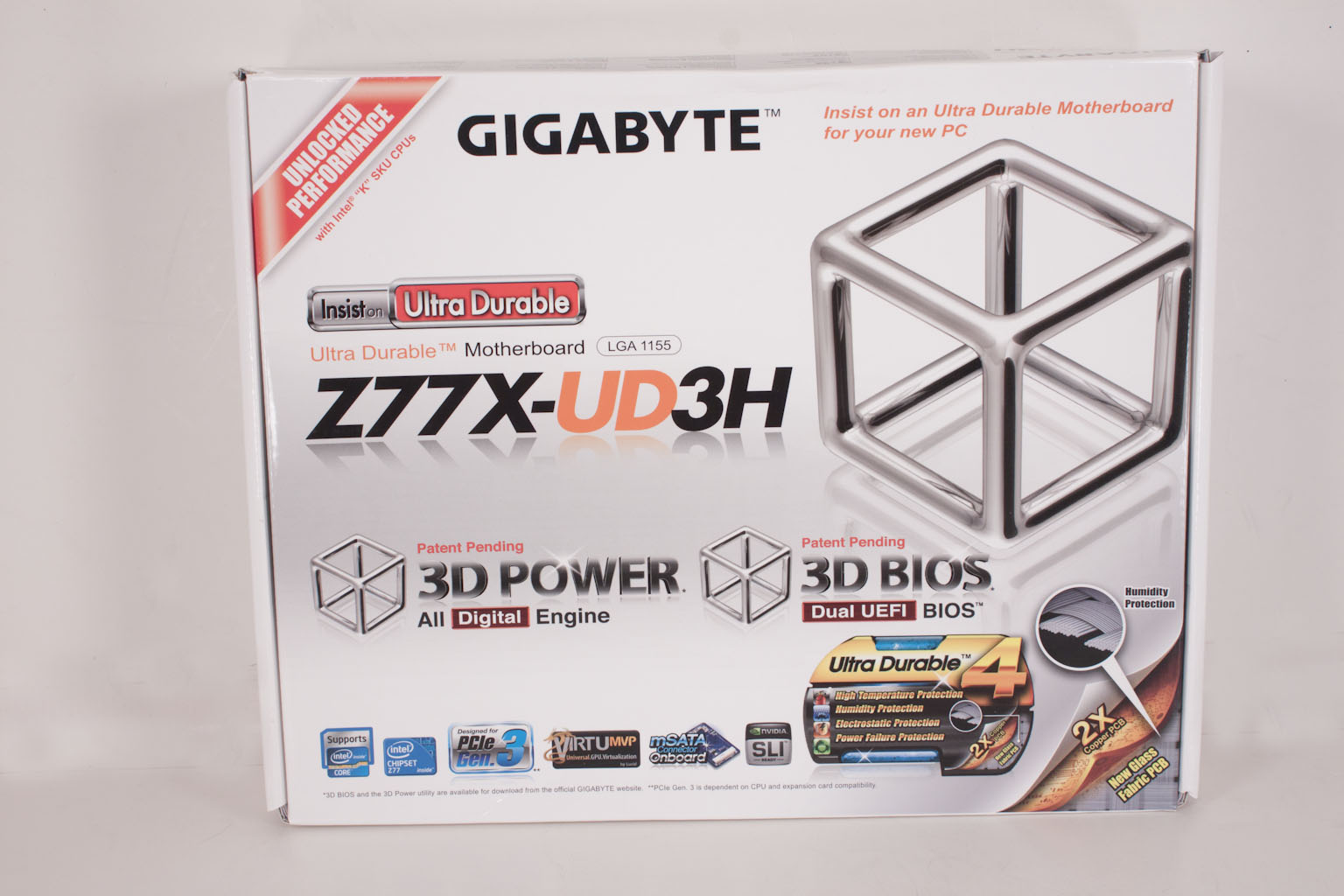
The back of the box is considerably more cluttered and chaotic. You do get a picture of the board you are buying, but it is the middle of a bunch of other marketing stuff. Some is important to a potential buyer, but to be honest most of the rest is fluff. Now the picture of the board is a there for a reason and is designed to show off their mSATA port on the board for SSD caching. We will cover this and more of the features a little later though.
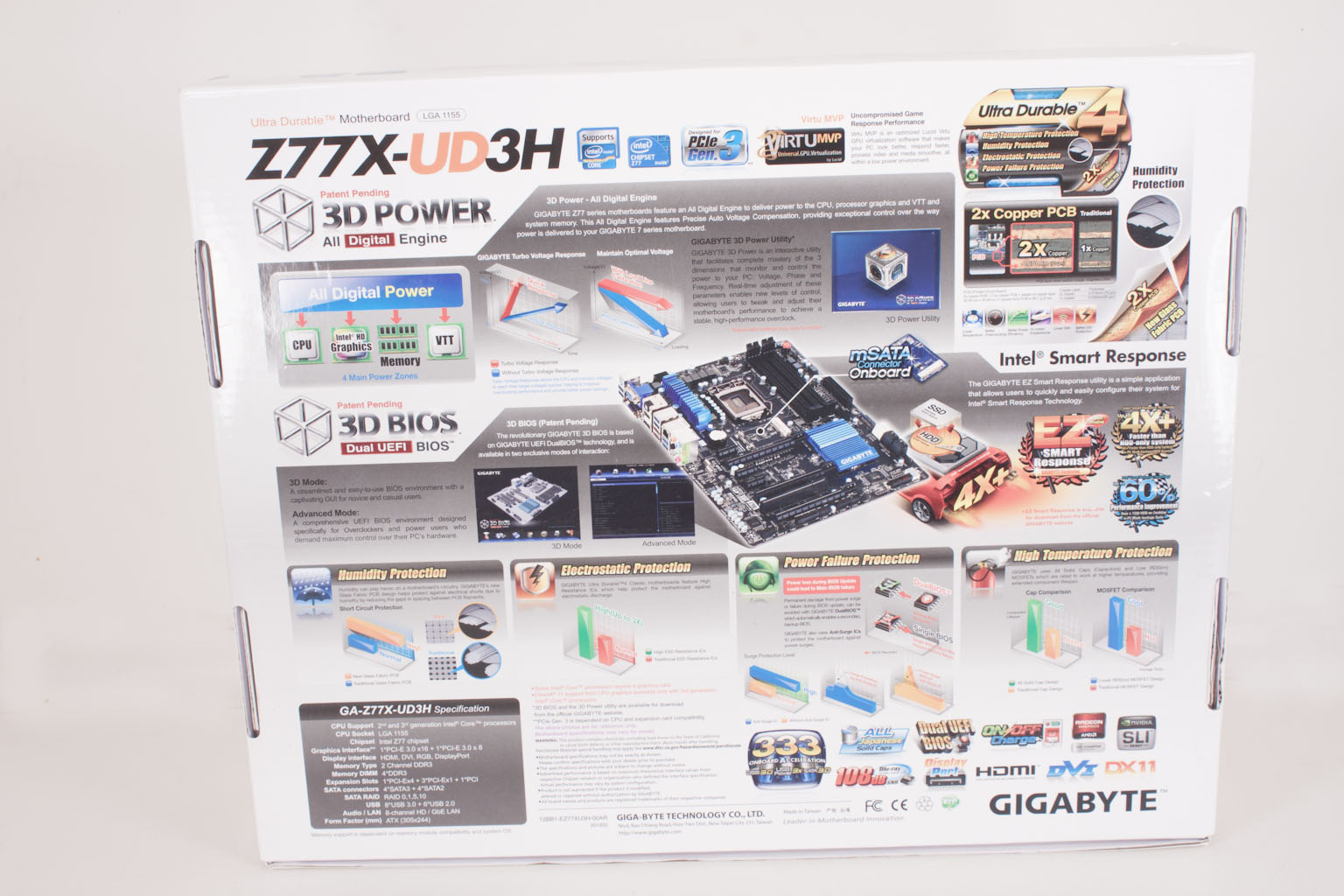
Inside the box, besides the Z77X-UD3H you will find a single SLI bridge, four SATA Cables (two blue and two black) and the usual manuals and utility DVDs. Other than that there is not much going on with the box so let’s check out the board itself.
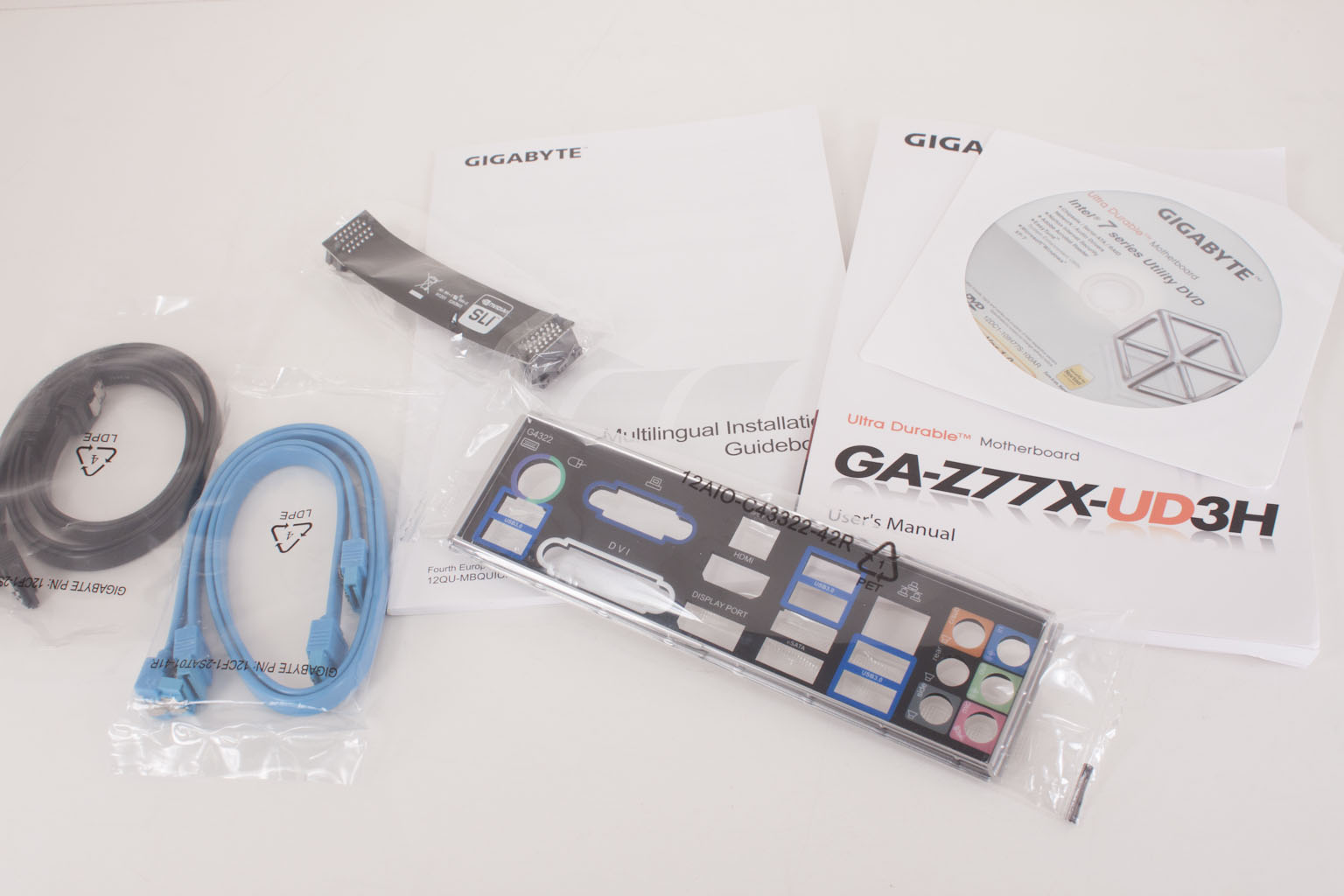
The Layout -
The layout of any motherboard is important. Even simple mistakes in component placement or the signal traces can cause major issued in performance and stability. With the ATX form factor we find that this is even truer; the devices we drop onto them demand more and cleaner power while the signal speeds push faster and faster. As you might have guessed the GA-Z77X-UD3H is a full sized ATX motherboard. The look is nice a clean with a matte black finish (this is mostly due to Gigabyte’s new material). The tracing layout is barely visible on the surface of the board thanks to this material and the coating that is used to reduce not only the possibility of moisture, but also electrostatic discharge damage. Gigabyte has continued the use of all solid capacitors and ferrite chokes on the board. There are also some other surprises in store on the board.
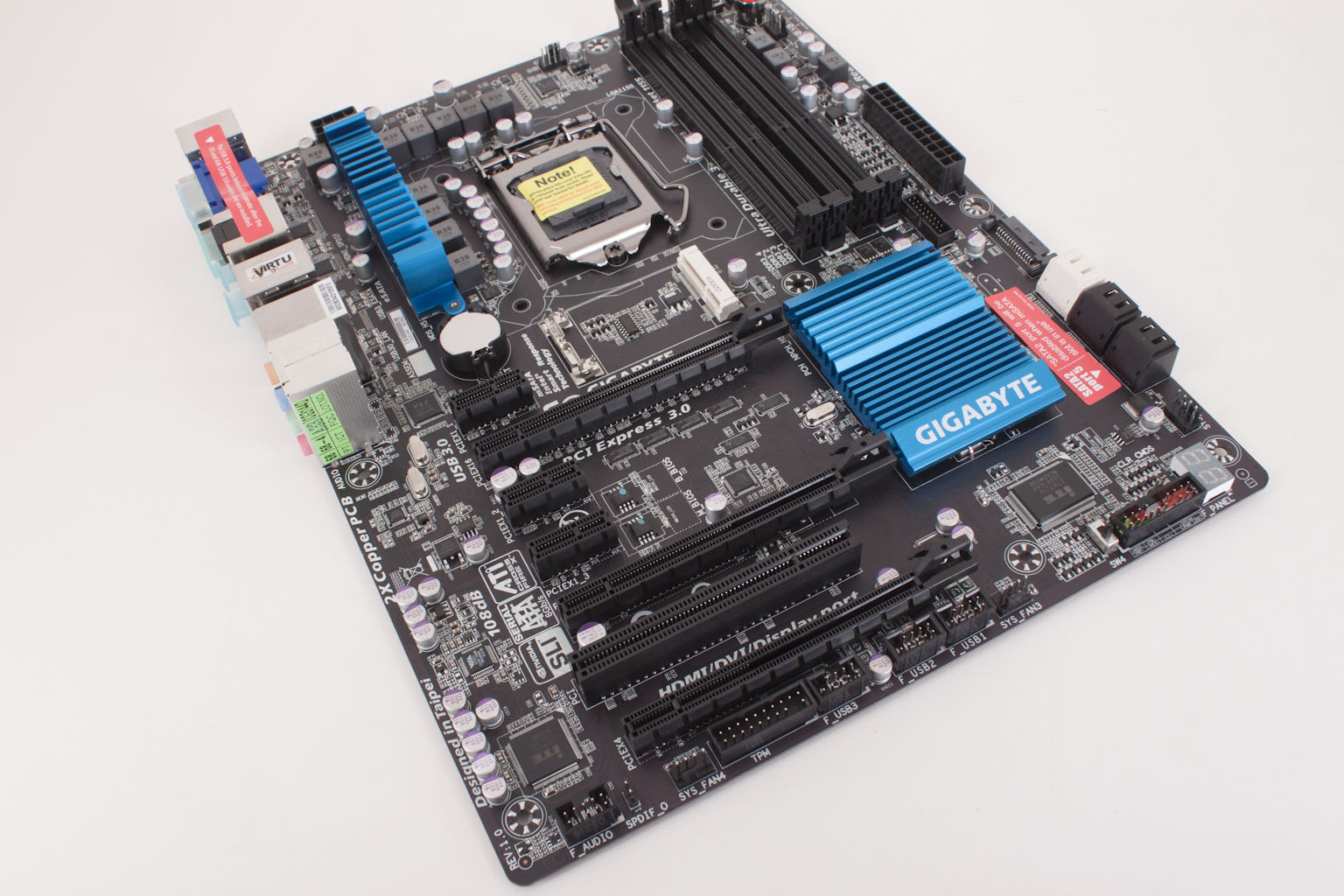
So now that we have a little bit of background on the board, let’s kick off our usual walk around. Starting off in our normal upper-left hand corner of the board we find four slots for RAM which typical. There is also a cluster of controls on the board (power, reset, and CMOS reset). Gigabyte has also thrown in a USB 3.0 header. You can also see the mSATA port on the board in this shot.
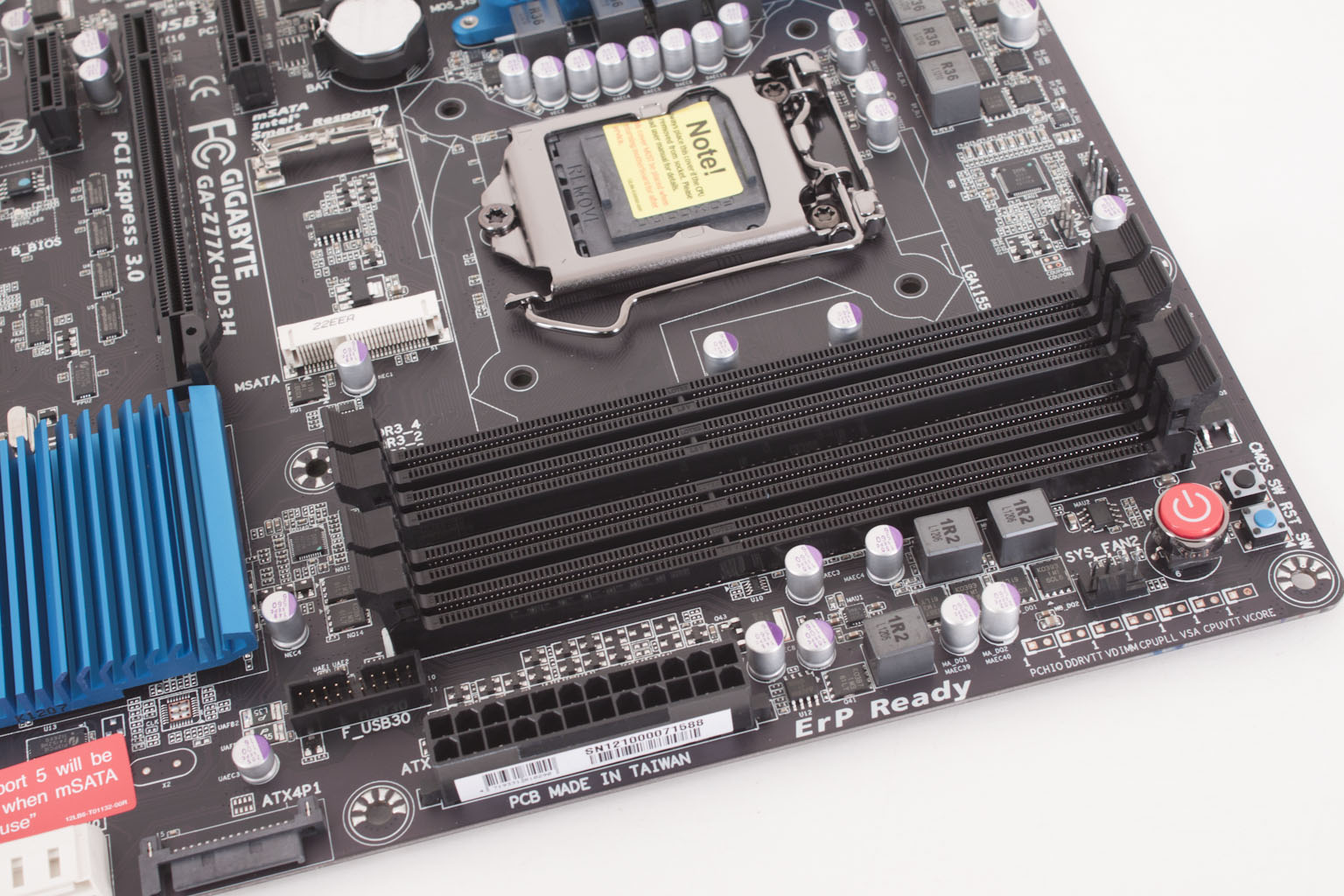 |
 |
 |
Taking a closer look at the mSATA port we find that it is a suitable for a 55mm mSATA card and can be used for SSD caching which can help to speed up traditional HDDs and even SSDs to a certain extent.
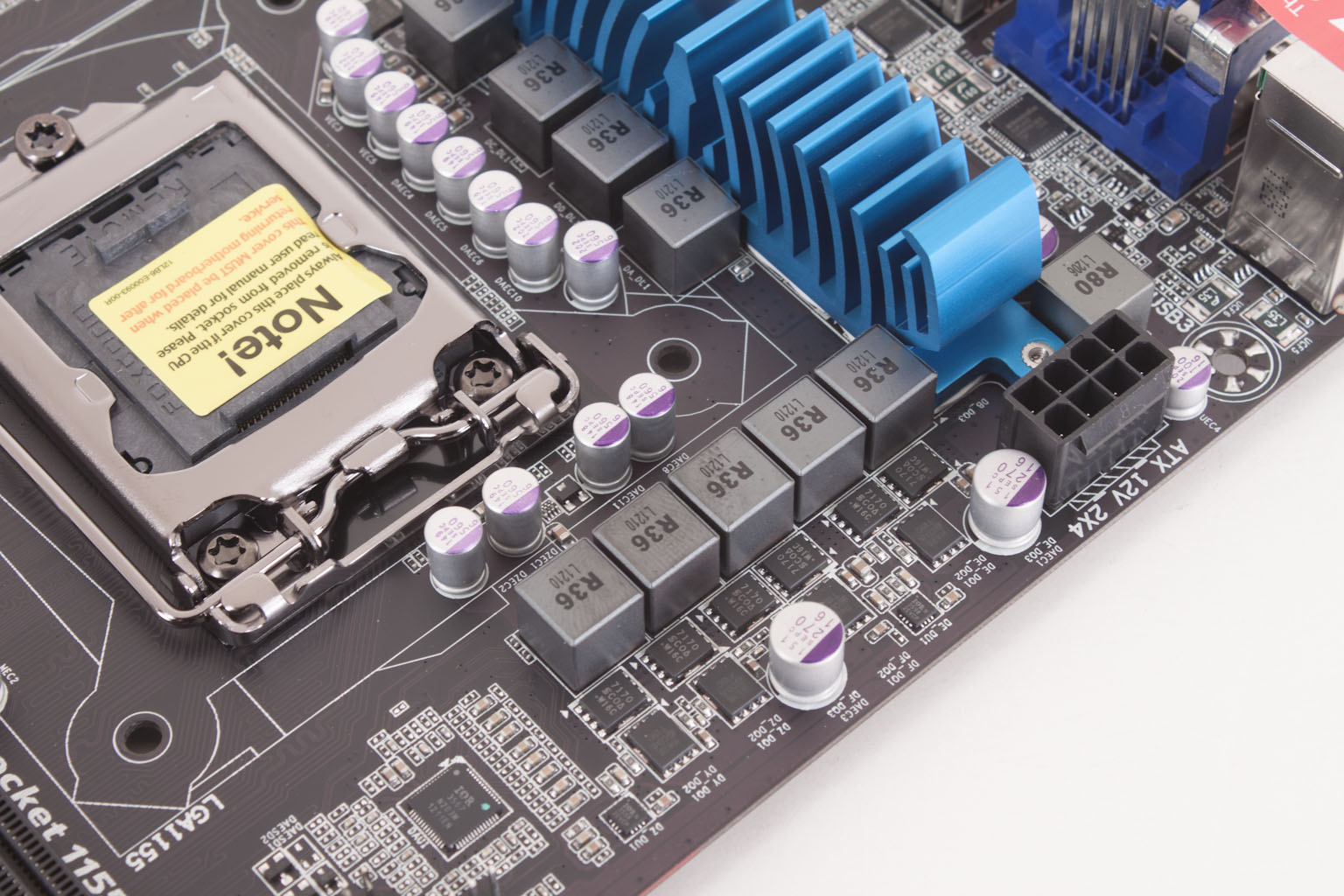
Checking out the voltage regulation for the CPU we find a nice layout, but as with most mid-range boards we are concerned about the lack of complete cooling in this area. The 8-pin Aux ATX power connector is in a nice place and as we show you in our video below, the heatsink is angled so that you should not lose any knuckle skin (we still recommend an extension cable though).
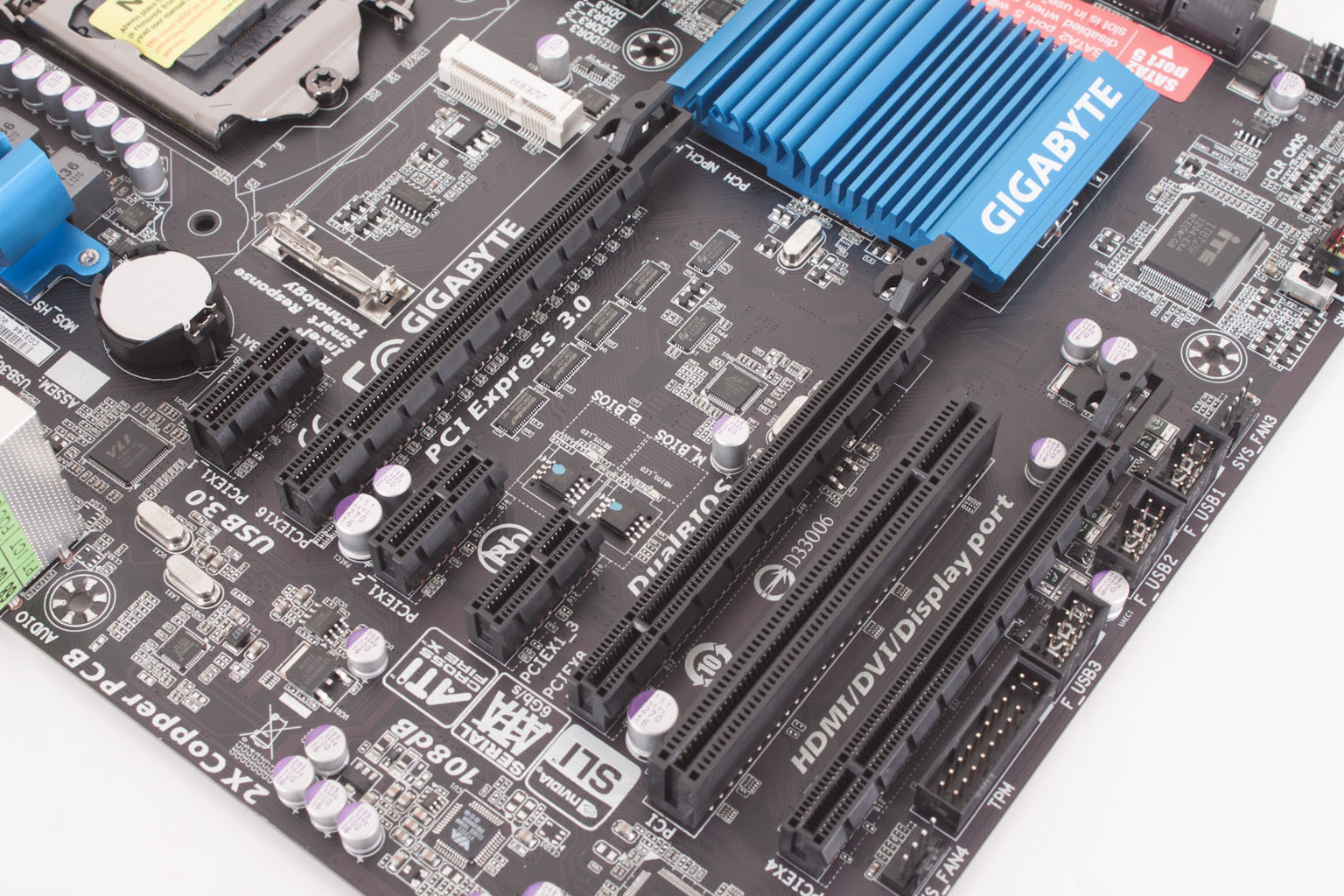
Moving down to take a look at the peripheral slots we find the now typical (with the Z77 that is) arrangement of one x16 PCIe Gen 3 slot and two PCIe gen 2 x8 slots. There are also a compliment of x1 slots and a single PIC 2.1 slot on the board (for good measure we guess). Along the bottom of the board we find a TPM (Trusted Platform Module) header (a 20+1 pin header) and a few USB2.0 headers. Checking out the PCH we find a fairly decent heatsink on the board and a note from Gigabyte. If you chose to take advantage of the mSATA connector on the board you will lose SATA 2.0 port number 5.
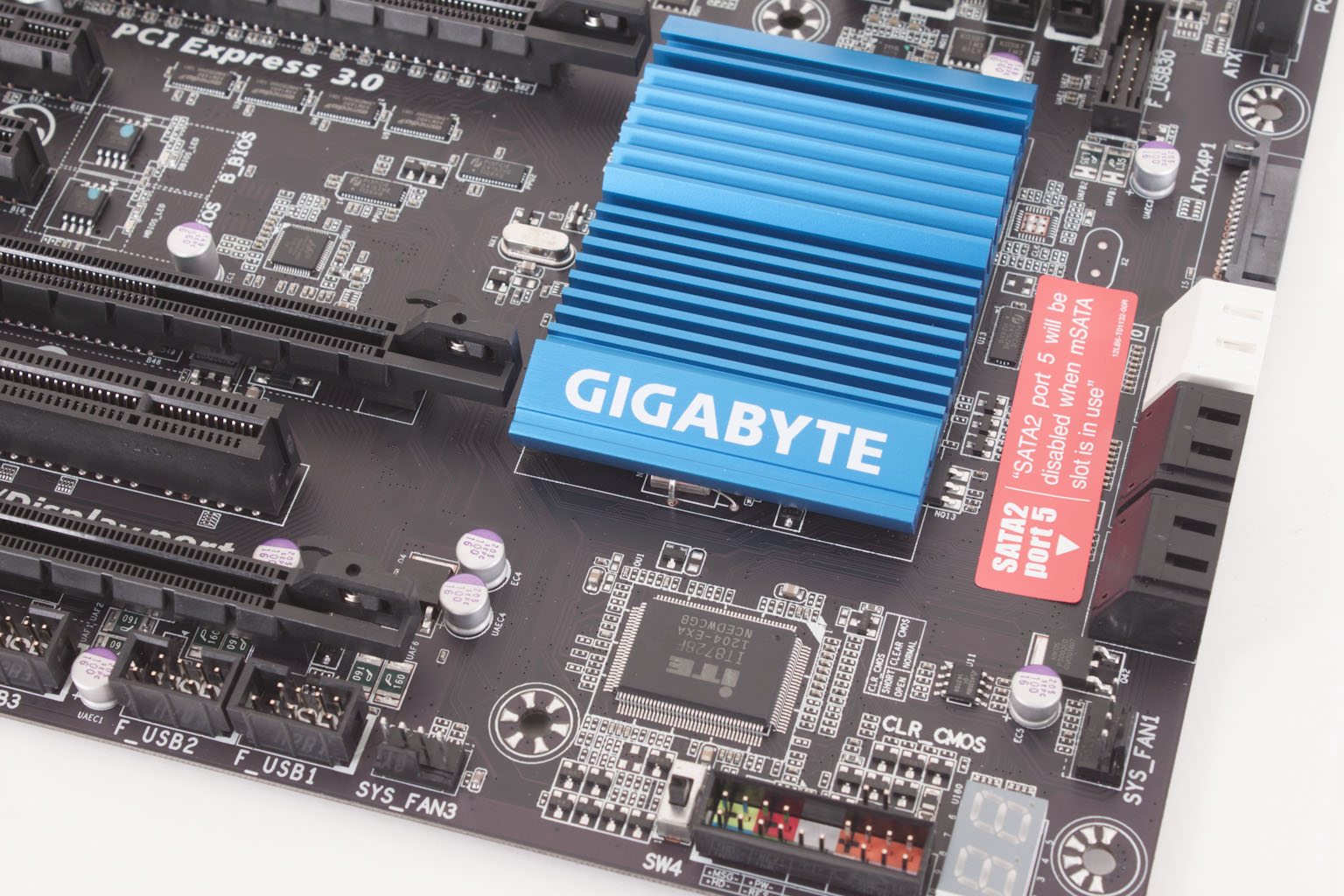 |
 |
For extra PCIe power Gigabyte has chosen to use a SATA power connector rather than the more typical Molex connector. This has advantages and disadvantages; on the one hand there are often more SATA power connectors than Molex on modern PSUs, but on the other your typical SATA power connector and be bulky and flimsy. A good shock here could break it off.
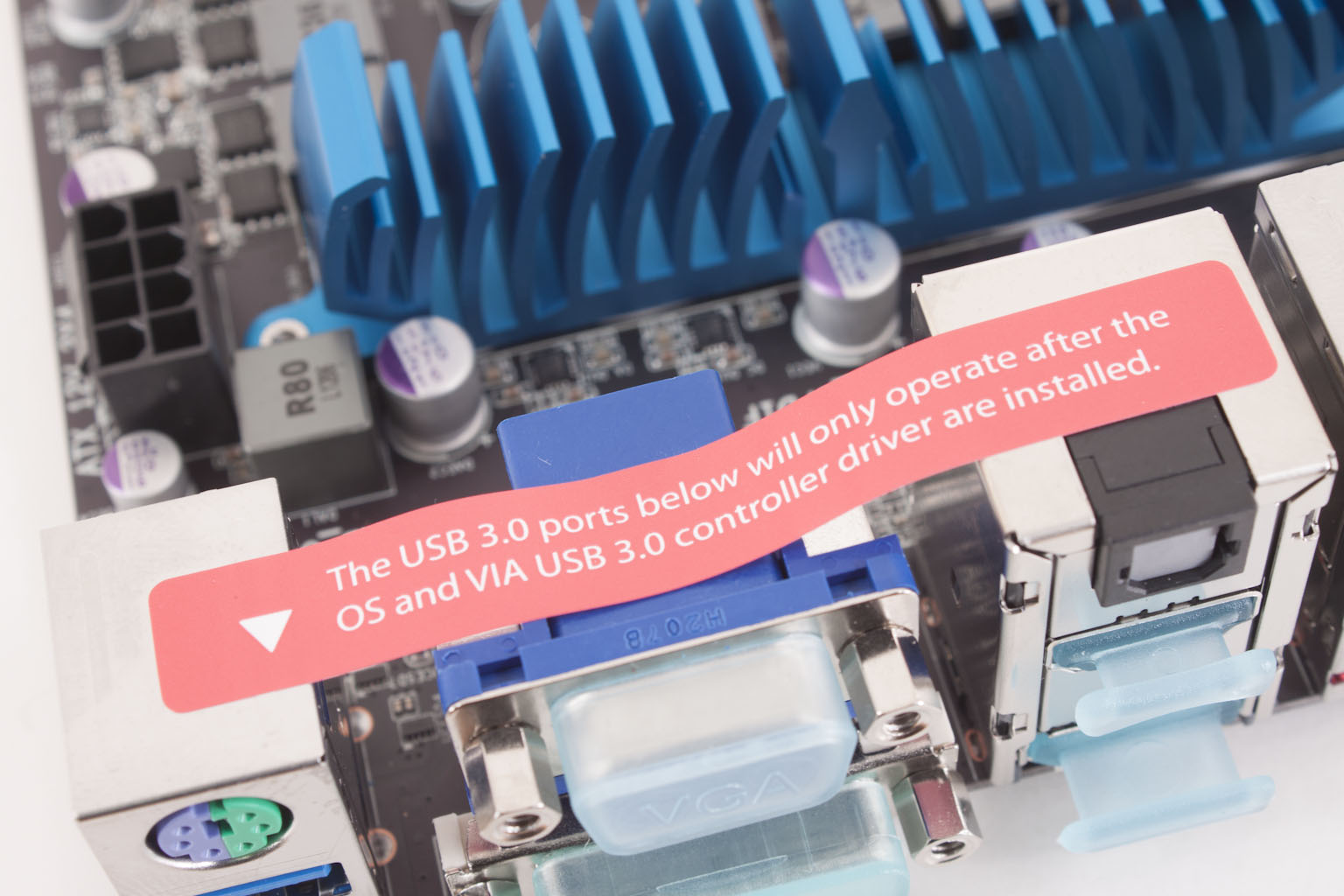 |
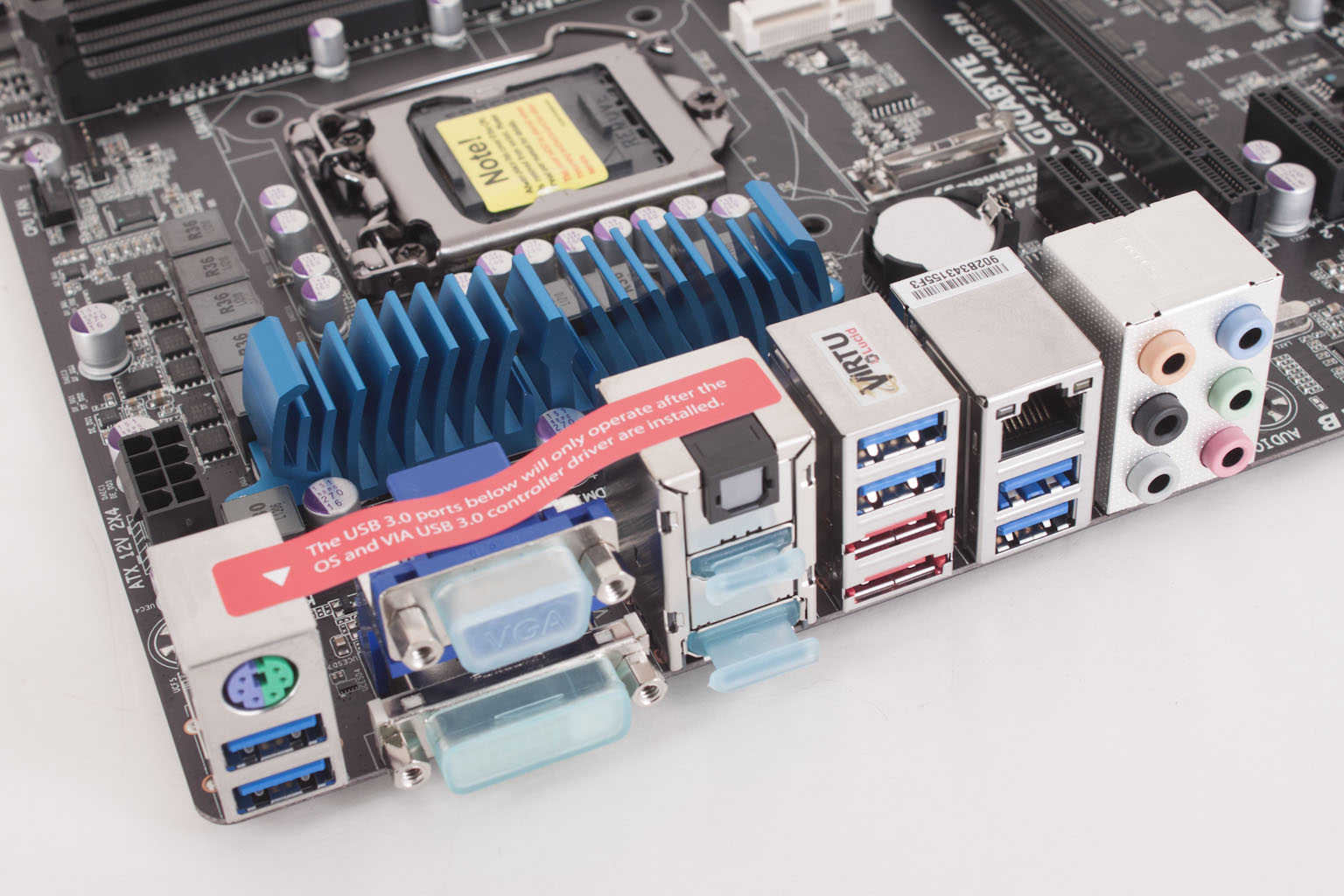 |
Flipping things around to the I/O ports we find a friendly warning letting us know that the USB 3.0 ports directly under the P/S2 ports will not work until you install drivers. This means that if you are using a USB keyboard and mouse you will want to use one of the other four USB 3.0 ports that are back here, or plug in a USB 2.0 adapter into one of the onboard headers.
Overall the GA-Z77X-UD3H is a solid board with some nice options. You can check out our video below for more information.
Features -
In the current market motherboard (and indeed almost all component) performance is very close. The days of a large performance advantage between boards using the same chipset are long gone. That is unless someone makes a HUGE mistake (like runs traces completely wrong). Now, the thing that differentiates different products is the features. These are things like power management, extra slots, better audio CODECs etc. It is these items that R&D teams work so hard to drop into what are really identical pieces of hardware at their most basic level.
Excellent -
mSATA for SSD Caching
PCI3 Gen 3
3D Power
VirtuMVP
This list, while small is still pretty nice. The option for an mSATA card on this board will attract a few enthusiasts as well as cost conscious consumers. The 3D power options are nice to make sure that you have clean and stable power to all components of your board while the PCIe Gen 3 and VirtuMVP from Lucid round out the top features.
In the middle (sort of good) -
ESD protection
Humidity/Moisture protection
High-Temp Protection
Dual UEFI BIOS
3D BIOS
Here the list includes a few things that will be listed as floor mats in a few months. The list of protections built into the board is nice and although not completely unique they do stand out in a crowd of boards that are very close together in terms of specification. The Dual UEFI BIOS is a nice touch and can get you back in the game fast if you mess up during an overclock or if you just want to maintain two profiles. The 3D BIOS we will cover in our performance review.
Floor Mats -
On/Off Charge
SLI
Crossfire
2 OZ Copper
Here we have a partial listing of items that do differentiate Gigabyte products, but they are not enough to make you buy this board. They are also becoming extremely common between all manufacturers in one way or another.
Conclusion –
So far the Gigabyte GA-Z77X-UD3H motherboard is looking pretty good. You have some decent options to bring higher levels of performance than you would normally see at this price point ($160 or so). You do get dual x8 SLI or crossfire and the option for SSD Caching for improved disk performance (although that will cost you a bit). Still from what we are seeing here so far it is looking like you are getting your money’s worth at least on paper. Now comes the much harder part. The performance tests, which we will have for you very soon.
Discuss this in our Forum



